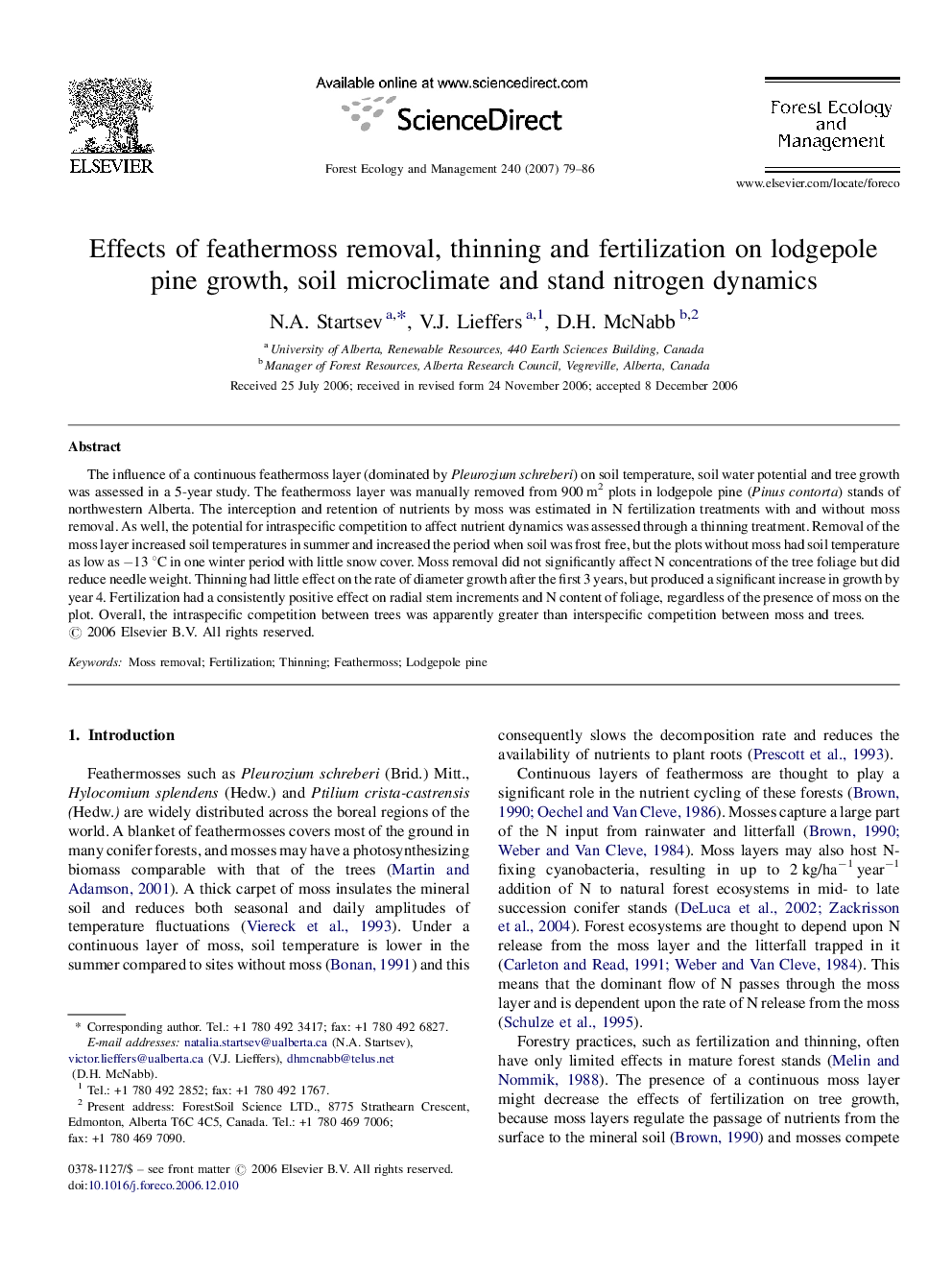| Article ID | Journal | Published Year | Pages | File Type |
|---|---|---|---|---|
| 89717 | Forest Ecology and Management | 2007 | 8 Pages |
The influence of a continuous feathermoss layer (dominated by Pleurozium schreberi) on soil temperature, soil water potential and tree growth was assessed in a 5-year study. The feathermoss layer was manually removed from 900 m2 plots in lodgepole pine (Pinus contorta) stands of northwestern Alberta. The interception and retention of nutrients by moss was estimated in N fertilization treatments with and without moss removal. As well, the potential for intraspecific competition to affect nutrient dynamics was assessed through a thinning treatment. Removal of the moss layer increased soil temperatures in summer and increased the period when soil was frost free, but the plots without moss had soil temperature as low as −13 °C in one winter period with little snow cover. Moss removal did not significantly affect N concentrations of the tree foliage but did reduce needle weight. Thinning had little effect on the rate of diameter growth after the first 3 years, but produced a significant increase in growth by year 4. Fertilization had a consistently positive effect on radial stem increments and N content of foliage, regardless of the presence of moss on the plot. Overall, the intraspecific competition between trees was apparently greater than interspecific competition between moss and trees.
